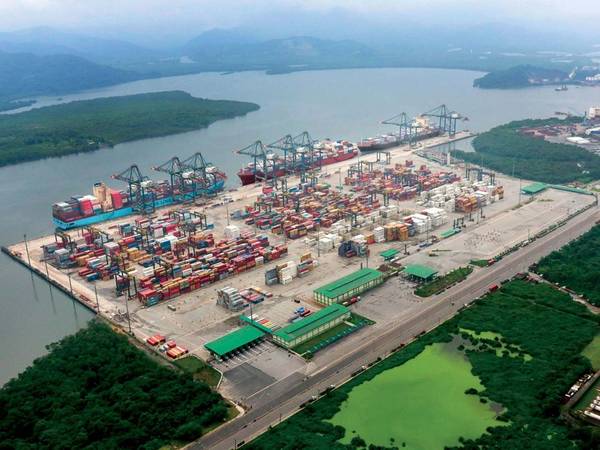
Maersk's APM Terminals has pledged a €962 million (US$1 billion) investment in its Brazilian operations up to 2026.
This figure includes a €296 million of a total €483 million investment exclusively for the Phase One development of a new terminal in Suape. The terminal, located in Estaleiro Atlântico Sul, is in the final stages of acquisition and will rejuvenate infrastructure and increase competition in the port.
APM Terminals has committed an additional €666 million of investment to the company’s four other terminals and inland depots, by 2026. A large share of this, around €285 million, is allocated to Brasil Terminal Portuário, Santos.
The company, which plans to multiply storage capacity fivefold at its inland container depots in the Northeast and Southeast of the country, said it will prioritize early renovation of its terminal in the Port of Santos, Brasil Terminal Portuário (BTP). BTP is operated in partnership with Terminal Investment Limited (TIL), a subsidiary of the MSC group).
APM Terminals is negotiating with the federal government to extend its concession agreement, which expires in 2027, for another 20 years. In exchange, APM Terminals would modernize and double the current 1.5 million TEU capacity of the terminal, which is currently operating at close to full capacity (92%).
An initial investment of at least €285 million up to 2026, could realistically reach €408 million over the next five years due to ongoing improvements. As well as expanding BTP, APM Terminals and TIL expressed joint interest in a new container terminal at the Port of Santos, STS 10, located in an area adjacent to its existing terminal. The new government, however, has not yet defined the future of the project, which has been put on hold for reassessment.
Under the previous government, the tender was subject to controversy, as other port operators expressed concern over the dominance of Maersk and MSC, the parent companies of APM Terminals and TIL respectively. Responding to this, APM Terminals’ CEO Keith Svendsen said that experience in other countries shows that the concern is unfounded.
With BTP operating at 92% capacity – and an 80% capacity generally seen as the maximum for optimal efficiency, Svendsen stated: “Our primary focus is increasing capacity and modernization. There is now an urgent need for investment in the Port of Santos, both to ensure the deepening of the access channel - which will allow the entry of new, larger, and more efficient ships - and to expand capacity of the port complex, which is close to the limit.”
Any investments in the terminal will also be an opportunity to position the terminal with low or zero-emission container handling. APM terminals has committed to Net Zero Greenhouse Emissions by 2040 and a 70% reduction in absolute (total) emissions as an interim milestone for the period 2020-2030 for its commercially controlled terminals. This will involve investment in the electrification of equipment, purchase or generation of renewable energy and optimization.


